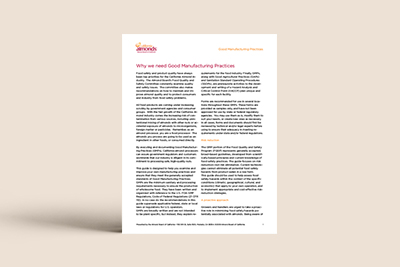Food allergies involve an abnormal response of the immune system to naturally occurring proteins in certain foods that most individuals can eat safely. Due to numerous consumer complaints, a new food labeling law was established in 2006—the Food Allergen Labeling and Consumer Protection Act (FALCPA).
Under FALCPA, food labels are required to clearly state if the food contains a “major food allergen,” which is identified as any ingredient that contains a protein derived from these eight foods: milk; eggs; fish, crustacean shellfish; tree nuts such as almonds, walnuts and pecans; peanuts; wheat; and soy beans.
Food manufacturers must comply with the law by identifying in plain English on their product labels the food source of any ingredient that is, or contains, protein from those eight foods listed above. FALCPA also requires manufacturers to identify the type of tree nut.
Manufacturers are also responsible for ensuring that food is not misrepresented or misbranded as a result of the presence of undeclared allergens. Handlers and manufacturers must be sure that allergens are not added intentionally to food, but not declared on the label; or may be unintentionally introduced into a food product and consequently not declared on the label. This introduction may be caused by the use of common equipment or other manufacturing processes. Manufacturers must identify and implement controls to prevent potential allergen cross-contact.


